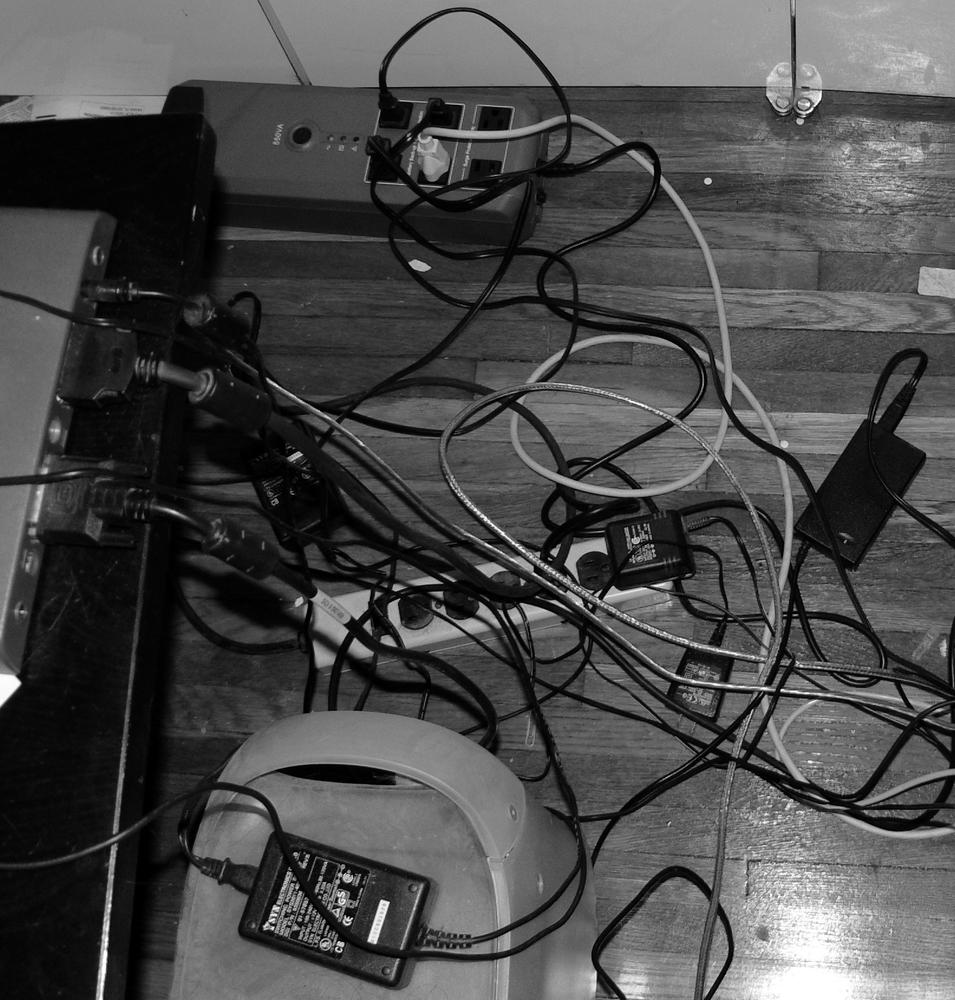Chapter 25. Bluetooth
Nothing’s so dated as yesterday’s futurism. In 1993, naming a high-tech magazine “Wired” must have seemed really hip. Today, “wired” devices are yesterday’s tech. No one wants a mess like the one in Figure 25-1, but everyone’s got one...although slowly that’s starting to change. Network, speaker, microphone, mouse, and keyboard connections are already going wireless. Disks, cameras, and monitors will follow soon. By the end of this decade, most systems should have a power cord and nothing more. By 2020, even the power cord might vanish. It’s obvious the future belongs to wireless. After all, every cable you can remove from your system is one less leash tethering you to your desk. 802.11 is de rigueur for notebooks and increasingly common in desktops. Cell phones let us communicate from anywhere. Infrared gave rise to the clicker and freed us from commercials. Bluetooth is rapidly becoming the preferred way to connect computers to low-bandwidth peripherals like keyboards, mice, and remote controls.

The Bluetooth Protocol
Bluetooth connects devices wirelessly in ranges of 1 to 100 meters, depending on power. There are several versions of Bluetooth: 1.0, 1.1, 1.2, and 2.0. (The Java API for accessing a Bluetooth device is the same regardless of version.) Bluetooth 1.0, 1.1, and 1.2 devices can reach speeds of 723 kilobits per second. ...
Get Java I/O, 2nd Edition now with the O’Reilly learning platform.
O’Reilly members experience books, live events, courses curated by job role, and more from O’Reilly and nearly 200 top publishers.

